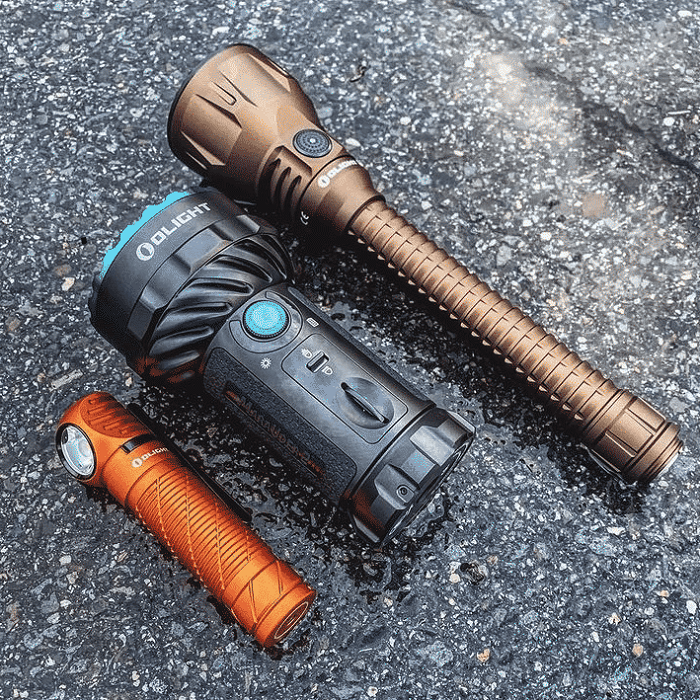Tactical torches made for search and rescue, law enforcement, hunting, and night security are much more powerful than your regular everyday torch. They’re also convenient for camping, as they offer plenty of illumination to keep you safe at night. These torches are potent, durable, and packed with helpful features. If you’re looking for a quality search light, but don’t know where to start, here are six things to consider when browsing.
Brightness Levels

The brightness or lumen output is the first thing you need to look at. The number of lumens that you need in a flashlight for search and rescue depends on the specific conditions and tasks that you will be performing. A higher number of lumens provides a brighter and more powerful beam of light, which is useful for illuminating large areas or objects at a distance.
With the modern advancements in technology, you can easily get a high-performance light for search and rescue from the range of options available. You’ll find high-quality lights that produce from 4 up to 14.000 lumens. The brightness and range are two of the standout features of these devices.
Many of them have extremely high lumens ratings and can throw a beam over long distances, making them ideal for searching in dark or low-light environments. Some of the search flashlights also have adjustable focus and beam patterns, allowing you to customise the beam to suit their needs.
How Many Lumens Do You Need for Search and Rescue?
As a rough guide, flashlights with lumen ratings of at least 500-1000 are generally suitable for search and rescue operations. However, it’s always a good idea to consult with experts or test out different models to determine the most suitable option for your specific needs.
That being said, lumens alone don’t always determine the effectiveness of search lights. The beam pattern, focus, and overall design of the device also play a role in its performance. Therefore, it’s a good idea to consider a range of factors when selecting a flashlight for search and rescue operations, rather than focusing solely on the lumens.
Battery Life

Flashlights with longer battery life are more convenient to use and are more suitable for extended operations or other tasks that require prolonged use. So, it’s a good idea to consider the battery life of a device when selecting one.
Several factors can affect the battery life of a torch, including the size and type of the battery, its brightness, and the specific features and functions that it’s using. For example, a flashlight with a high lumens rating or a lot of additional features, such as multiple lighting modes or a built-in charger, will have a shorter battery life than a light with a lower lumens rating and fewer features.
Beam Pattern
Beam patterns refer to the shape and distribution of the light produced by the flashlight. Different beam patterns are suitable for different tasks and environments, so it’s important to consider this factor when selecting a light for search and rescue operations.
Some common beam patterns for these flashlights include:
-Flood beam: A flood beam is a wide, diffused beam that’s suitable for illuminating a large area or close-up tasks. Flood beams are often used for search and rescue because they provide a wide field of view, making it easier to see a larger area at once;
-Spot beam: A spot beam is a narrow, focused beam of light that’s great for long-range searching or throwing a beam over a long distance. Spot beams reach further and are more effective at illuminating a specific area;
-Adjustable focus: Some torches have adjustable focus, which allows the user to adjust the beam pattern from a flood beam to a spot beam or vice versa. This is useful because it allows you to switch between different beam patterns as needed to suit the specific requirements of the task at hand.
Weight and Size
The right weight and size for your search light will depend on your specific needs and preferences. It should be lightweight enough to carry comfortably, but not so light that it feels flimsy or prone to breaking. In general, a weight of around 200-300g is a good balance for such a tool. When it comes to size, some people prefer a compact version that they can easily carry in a pocket or attach it to a belt, while others prefer a larger torch with a longer barrel for added reach or a more substantial grip.
Another factor to consider is whether you want a torch that you can hold in your hand or you mount it on a weapon or headlamp. Handheld flashlights are more versatile, but hands-free options can be more convenient for certain tasks.
Cost Efficiency

Cost efficiency is an important factor to consider when buying a search and rescue flashlight and there are a few different ways to approach it:
-Price: Look at the price of the search torch and compare it to similar options. This can help you determine whether the product is a good value for the price;
-Lifespan: Another way to consider cost-efficiency is to look at the lifespan. A torch with a longer lifespan will require fewer replacements over time, which will save you money in the long run;
-Features: Some torches have additional features that make them more expensive, such as multiple lighting modes, adjustable focus, or a built-in charger. It’s a good idea to carefully consider whether these features are worth the extra cost for your specific needs;
-Battery type: The type of battery used by the torch can also impact its cost-efficiency. Those that use disposable batteries will require regular replacements, which add to the overall cost of the torch. Search lights that use rechargeable Lithium-Ion batteries may have a higher upfront cost, but they’re more cost-efficient in the long run because they don’t require as many replacements.












